In this article, we explore the most popular computer vision tools and their uses, to help you make informed decisions when selecting the right tool for your project.
About us: Viso.ai provides the leading end-to-end Computer Vision Platform Viso Suite. The infrastructure solution enables teams to build, deliver, and scale their computer vision applications. Get a demo for your company.
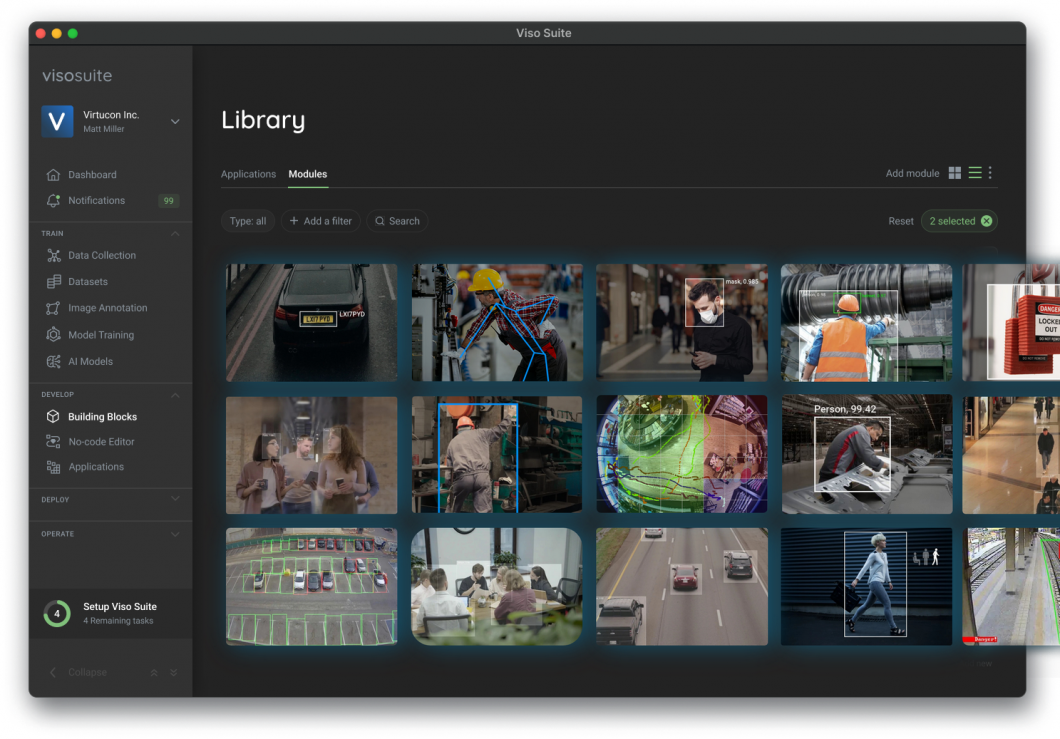
While working in the industry for almost 10 years, we have come across many of those tools to build commercial computer vision systems. At viso.ai, we power the leading computer vision infrastructure Viso Suite, included in the list below.
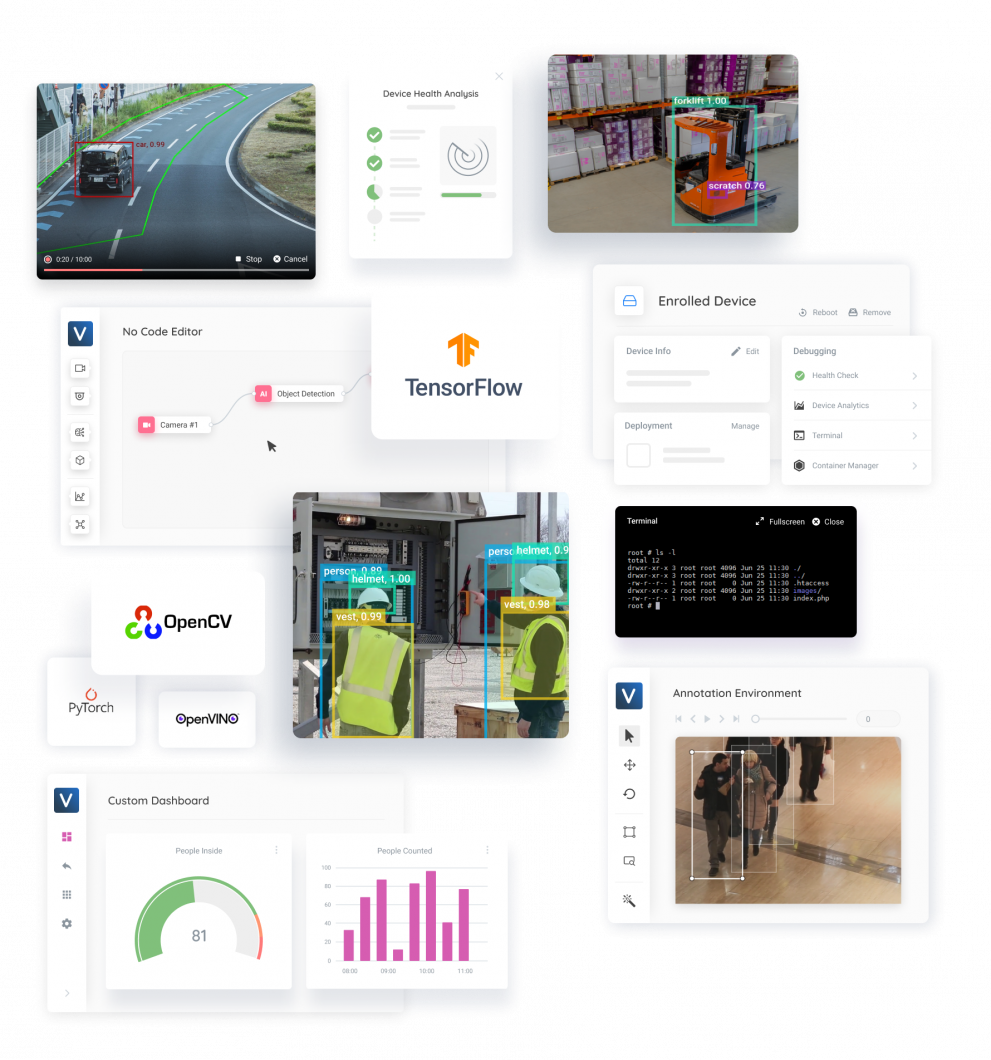
In the following, we will list some of the most powerful and popular computer vision software tools for data scientists, machine learning, and development teams.
List of the Most Popular Computer Vision Tools in 2024
- Tool #1: OpenCV
- Tool #2: Viso Suite
- Tool #3: TensorFlow
- Tool #4: CUDA
- Tool #5: MATLAB
- Tool #6: Keras
- Tool #7: SimpleCV
- Tool #8: BoofCV
- Tool #9: CAFFE
- Tool #10: OpenVINO
- Tool #11: DeepFace
- Tool #12: YOLO
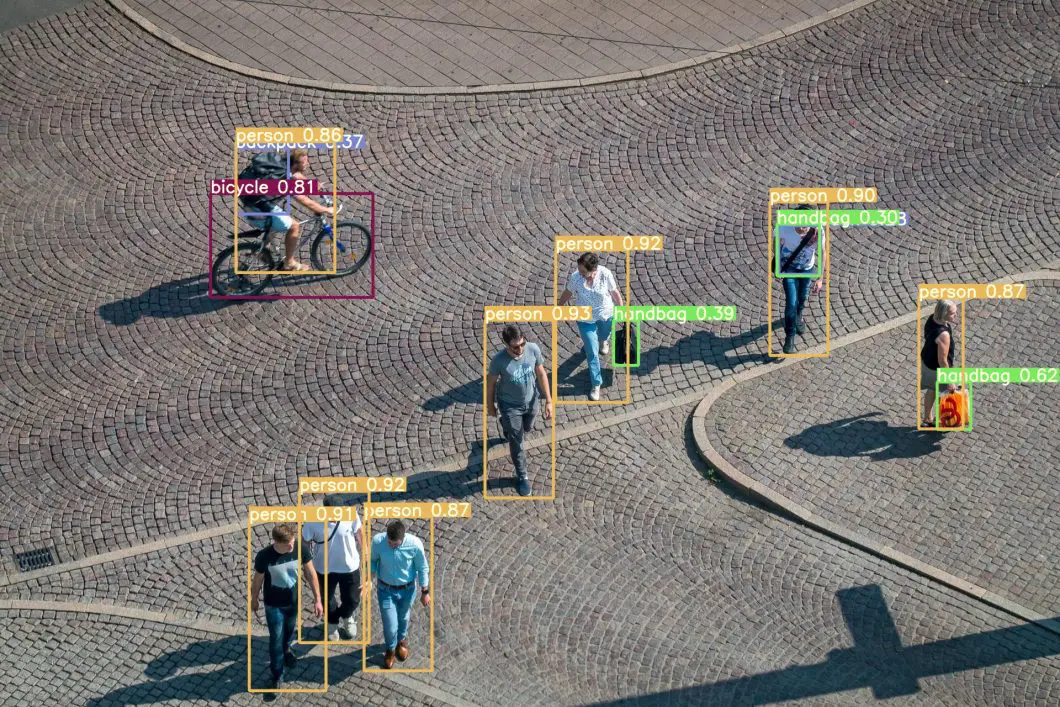
1. OpenCV – Real-Time Computer Vision Library
OpenCV is an open-source machine learning and computer vision software library. Created with a view of providing a common infrastructure for computer vision applications, OpenCV allows access to 2,500-plus classic and state-of-the-art algorithms.
These algorithms are useful for several tasks, including face detection and recognition, red-eye removal, object identification, extraction of 3D models of objects, tracking moving objects, and stitching multiple frames together into a high-resolution image.
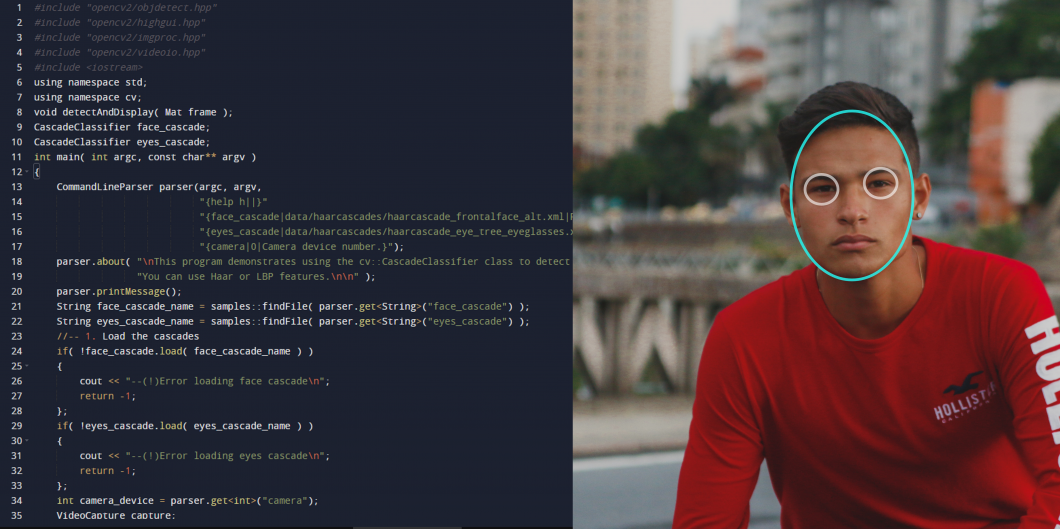
OpenCV has multiple interfaces like C++, Python, Java, and MATLAB, and it supports most operating systems, including Windows, Android, Linux, and Mac. The computer vision library is widely used by international companies, including Google, Facebook, IBM, Toyota, Sony, Honda, and Microsoft.
Pros:
- De facto standard tool for image processing
- Free computer vision software, open-source
- Large community support
- Offers access to more than 2,500 algorithms
- Allows you to tweak the code to serve specific purposes
Cons:
- It is not as easy to use as other tools like MATLAB
- Pretty steep learning curve
2. Viso Suite – Enterprise Computer Vision Infrastructure
Viso Suite is an end-to-end computer vision platform for businesses to build, deploy, and monitor real-world computer vision applications. The platform is based on a best-in-class software stack for computer vision including CVAT, OpenCV, OpenVINO, TensorFlow, or PyTorch.
Viso Suite includes over 15 products in one solution, including image annotation, model training, model management, application development, device management, IoT communication, and custom dashboards. Enterprises and governmental organizations worldwide use Viso Suite to build and operate their portfolio of computer vision applications (for industrial automation, visual inspection, remote monitoring, and more).
The model-driven architecture provides a robust and secure infrastructure to build computer vision pipelines with building blocks. The modular architecture allows using any camera (CCTV, IP, USB, etc.), any computing hardware (CPU, GPU, VPU, TPU, etc.), or ML framework. The high extensibility makes it easy to add custom code or integrate with Tableau, PowerBI, SAP, or external databases (AWS S3, MongoDB, etc.).
Pros:
- End-to-end platform to build and deliver all computer vision applications with one solution.
- No code computer vision to build computer vision pipelines much faster.
- Cross-platform: Build once, deploy anywhere – using any camera or AI model.
- Full edge device management, secure deployment to a large fleet of devices.
- Suitable for professional teams, vision experts, and newly trained developers.
- Enterprise-grade, zero-trust security, access management, and full data privacy.
Cons:
- The enterprise platform has no free plan.
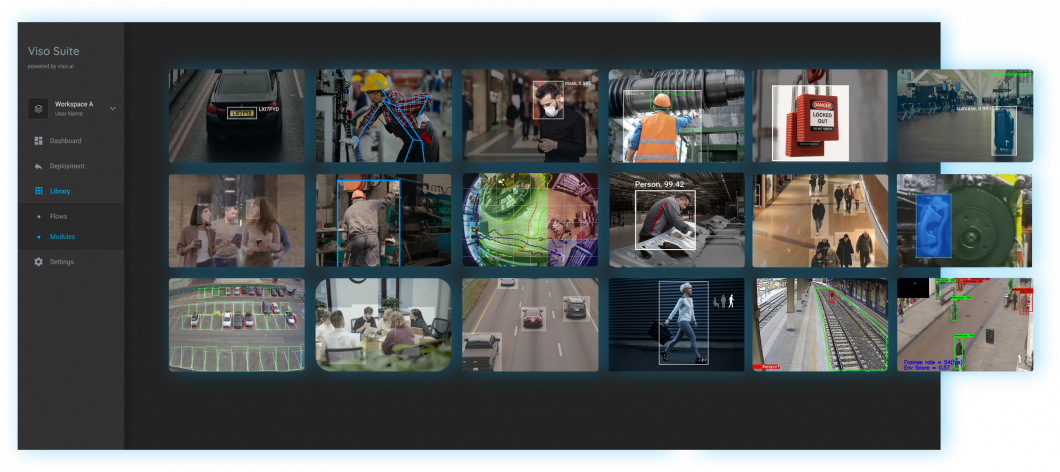
For more information about Viso Suite, check out the Features.
3. TensorFlow – Free Computer Vision Software Library
TensorFlow is among the most popular end-to-end open-source machine learning platforms with a comprehensive set of tools, resources, and libraries. It is especially useful for building and deploying applications related to computer vision that are powered by machine learning.
TensorFlow is one of the easiest computer vision tools and allows users to develop computer vision-related machine learning models for tasks like facial recognition, image classification, object detection, and more. It, like OpenCV, also supports various languages like Python, C, C++, Java, and JavaScript.
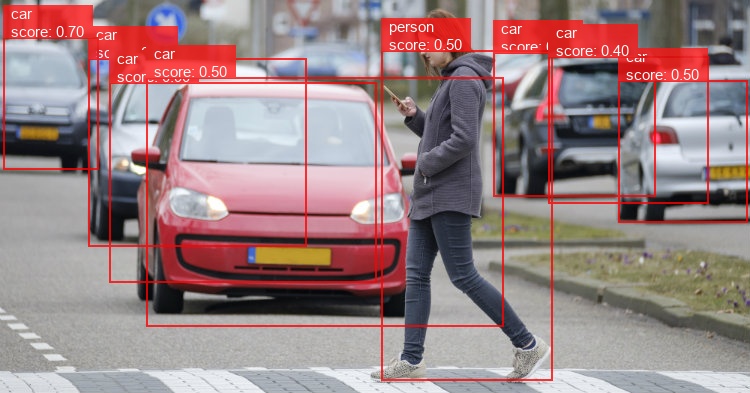
For real-world computer vision projects, the TensorFlow Lite is a lightweight implementation for on-device machine learning with edge devices. As part of TensorFlow, TF Lite greatly accelerates edge ML implementations with reduced model size and high accuracy at much higher efficiency, making it possible to run ML everywhere.
Pros:
- It is an open-source platform
- The platform is compatible with multiple languages
- It provides constant updates for more features and improvements
- Powerful features and good performance
Cons:
- It is an extremely resource-hungry toolkit
4. CUDA – Parallel Computing and Programming
CUDA (short for Compute Unified Device Architecture) is a parallel computing platform and application programming interface (API) model developed by NVIDIA. It allows developers to use the power of GPUs (Graphics Processing Units) to make processing-intensive applications faster.
The toolkit includes the NVIDIA Performance Primitives (NPP) library that provides GPU-accelerated image, video processing, and signal processing functions for multiple domains, including computer vision. In addition, the CUDA architecture is useful for a wide range of tasks like face recognition, image manipulation, rendition of 3D graphics, and others. Real-time image processing with Nvidia CUDA is supported for Edge AI implementations, to run on-device AI inference on edge devices such as the Jetson TX2.
It supports various programming languages, including C, C++, Python, Fortran, or MATLAB, and is also compatible with most operating systems.
Pros:
- The NPP library comes with 5000-plus primitives for image and signal processing
- It includes multiple language support
- It is fast and effective
- Powerful, high-performance video analysis
Cons:
- Its power consumption is quite high
- Limited cross-platform flexibility
5. MATLAB – Programming Platform for Engineers and Scientists
MATLAB is a programming platform that is useful for a range of different applications such as machine learning, deep learning, and image, video, and signal processing.
It comes with a computer vision toolbox that has multiple functions, apps, and algorithms to help you design solutions for tasks related to computer vision.
Pros:
- It is easy to use and learn; there are many free resources on MATLAB
- Since it is a programming language, writing code is easier
- MATLAB allows very fast coding, is excellent for fast prototyping
- It has a convenient automatic debugging process
- Considered to be the best tool for researchers
- All the functions are very well-documented
Cons:
- The tool isn’t free to use
- It’s rather slow for many tasks
- Not easy to integrate with third-party tools
6. Keras – The Python Deep Learning API
Keras is a Python-based open-source software library that acts as an interface for the machine learning platform TensorFlow. It is especially suited for beginners as it allows one to build a neural network model quickly while providing backend support.
Pros:
- Easy-to-use Python library, user-friendly and fast
- Provides multiple backend support
- It comes with great community support
Cons:
- Features can be improved
- Debugging can be somewhat difficult
7. SimpleCV – Open Source Framework for Machine Vision
SimpleCV is an open-source collection of libraries and software that allows you to develop machine vision applications easily. Through its framework, you gain access to several high-powered computer vision libraries such as OpenCV without the need to possess in-depth knowledge about complex concepts like bit depths, color spaces, buffer management, or file formats.
SimpleCV is written in Python and is compatible with multiple operating systems such as Mac, Windows, and Linux.
Pros:
- Free computer vision software
- Most of the algorithms are optimized to a great extent
- Involves good documentation
Cons:
- It does not support any programming languages except Python
8. BoofCV – Computer Vision Library for Real-Time Applications
BoofCV is a Java-based computer vision software that is specially written for real-time computer vision solutions. It is open-source and is released under an Apache 2.0 license which makes it free to use for academic and commercial purposes.
It is a complete library with all the basic and advanced features that one may require to develop a computer vision application.
Pros:
- It has a user-friendly interface
- Provides multiple language support
Cons:
- Is slower in low-level operations
9. CAFFE – A Fast Open Framework for Deep Learning
CAFFE or Convolutional Architecture for Fast Feature Embedding is a deep learning and computer vision framework developed at the University of California, Berkeley.
This framework is written in the C++ programming language and supports multiple deep learning architectures related to image classification and segmentation. It is especially useful for research purposes and industrial implementation due to its excellent speed and image-processing capabilities.
Pros:
- It is open-source
- Fast and easy to use
- Supports multiple languages
Cons:
- The documentation could be enhanced
- Provides only partial support for multi-GPU training
10. OpenVINO – Free Computer Vision Software Toolkit for Deep Learning Models on Intel Hardware
OpenVINO (Open Visual Inference and Neural Network Optimization) is a set of comprehensive computer vision tools that are useful for developing applications emulating human vision. Developed by Intel, it is a free-to-use cross-platform toolkit.
The OpenVINO toolkit comes with models for several tasks like object detection, face recognition, colorization, movement recognition, and more. To learn more about this tool, I recommend you to read the article What is OpenVINO? The Ultimate Overview.
Pros:
- It is a free and efficient toolkit
- Supports multiple deep learning frameworks
- It is compatible with Windows, Mac, and Linux operating systems
- Rapidly growing ecosystem, good hardware support
Cons:
- Only a few examples using Python
11. DeepFace – Free Computer Vision Software for Face Recognition
DeepFace is currently the most popular open-source computer vision library for facial recognition with deep learning. The library offers an easy way to perform face recognition-based computer vision with Python.
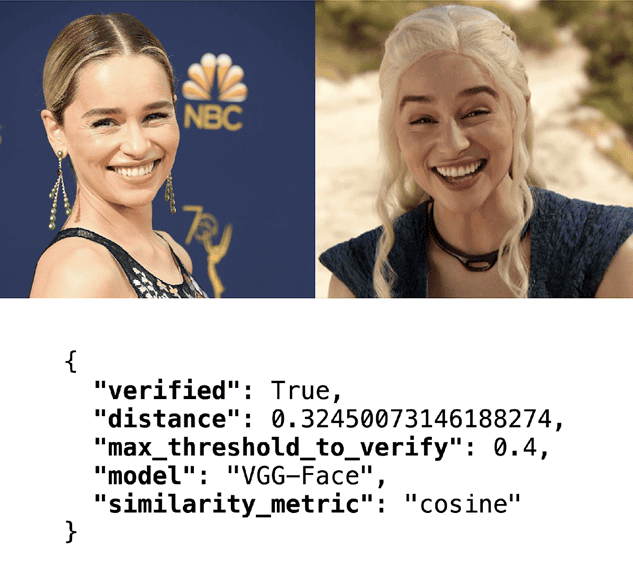
If you are looking for image processing tools to perform face recognition, face verification, or real-time facial attribute analysis, DeepFace is a great way to use the best-performing deep learning recognition models (Google FaceNet, VGG-Face, OpenFace, Facebook DeepFace, and more).
Pros:
- It is free and open-source, even for commercial use
- Lightweight and easy to install
- Supports the popular models and detectors
- Optimized to perform real-time on-device inference (Edge AI)
Cons:
- No Cloud API is available
To get more information, check out our article about how to use the DeepFace library.
12. YOLO – Open-Source Computer Vision Tool
You Only Look Once, or YOLOv7 is among the fastest computer vision tools you can opt for in 2024. Developed by Joseph Redmon and Ali Farhadi in 2016, it was specifically made for real-time object detection.
Faster than all other object detection tools out there, YOLO owes its speed to the application of a neural network to the complete image, which then partitions the image into grids. The software then simultaneously predicts the probabilities of each grid.
After the immensely popular YOLOv3 and YOLOv4, YOLOR achieved the best performance until it was surpassed by YOLOv7, released in 2022, YOLOv8, released in 2023, and YOLOv9, released in 2024.
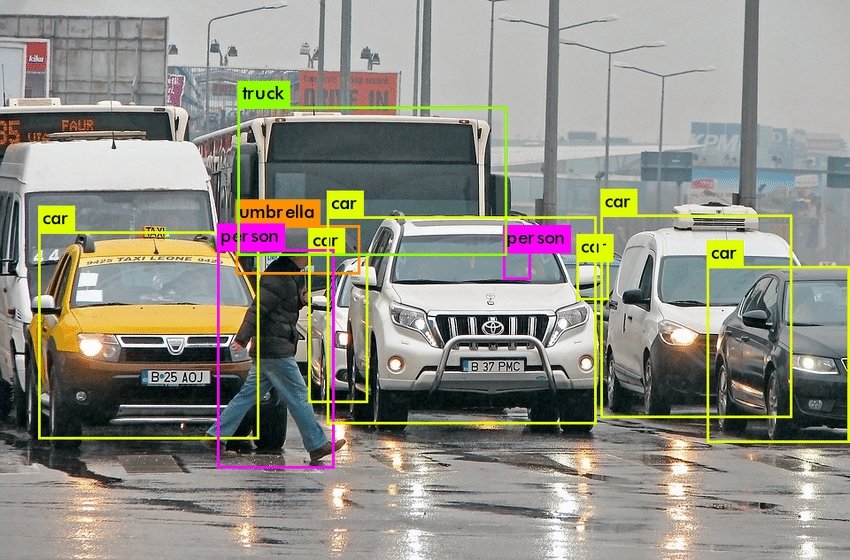
Pros:
- It is exceptionally fast
- The tool is highly accurate, with minimal background errors
- The algorithm has top-notch learning capabilities
Cons:
- It is not as effective in detecting small objects
- There is limited community support
For more in-depth information about YOLO, we suggest you read some of the other articles we’ve written discussing the nuances between the various versions of YOLO:
What’s Next With Computer Vision Tools?
We hope this article helped you to find the best computer vision tools and software available right now. These are sure to assist you in developing the most powerful and effective computer vision-related solutions you need.
If you enjoyed reading this article, we suggest you read:
- Read about Pytorch vs. Tensorflow
- Learn about the 5 most popular Deep Learning Frameworks
- Computer vision tools for image annotation: LabelImg, and CVAT
- Tools and methods for deepfake generation



